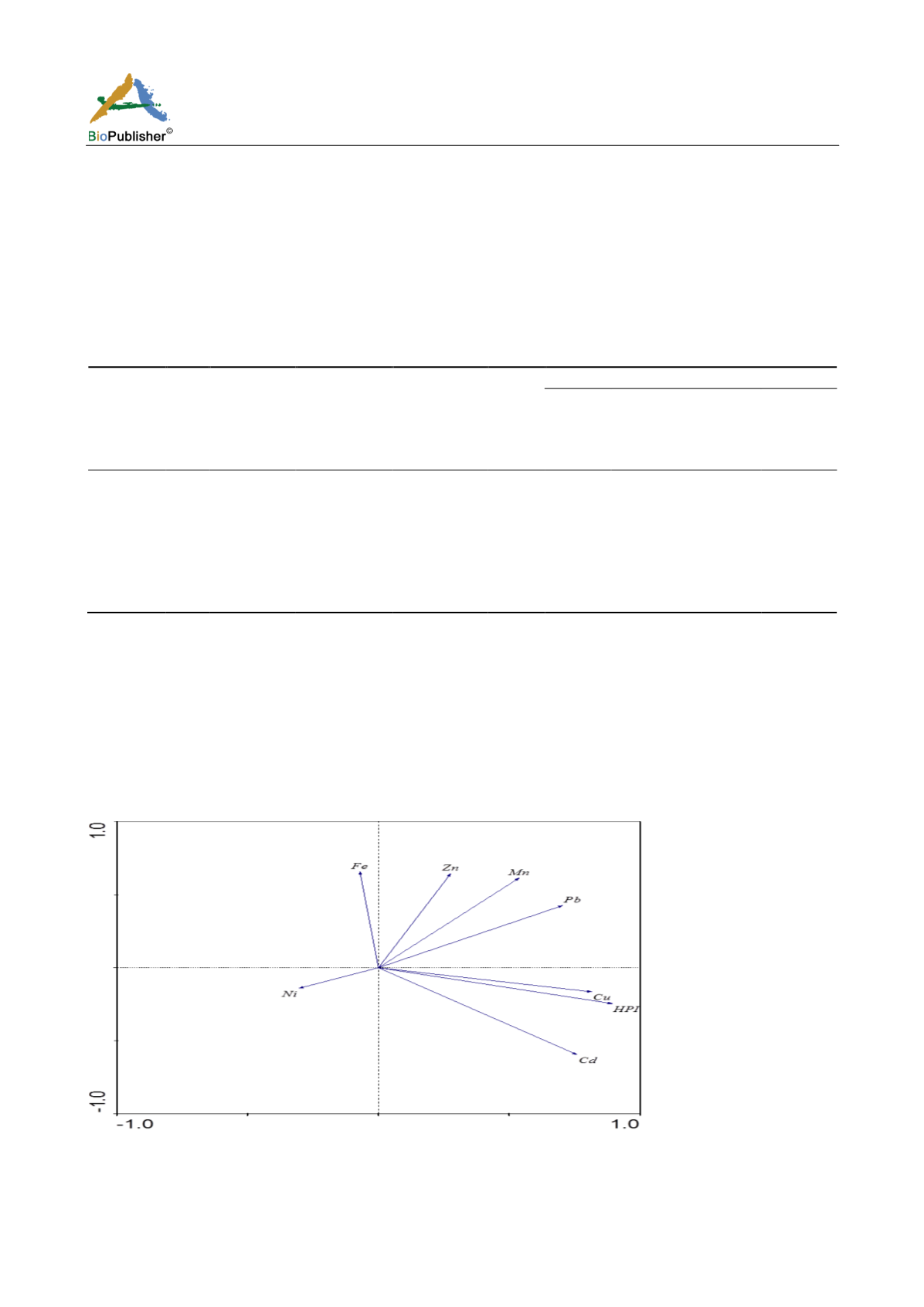
International Journal of Marine Science, 2017, Vol.7, No.35, 353-360
358
the same sources and the ability of suspended particulate to accumulate these metals from the surrounding water.
Suspended solid is the same as the sediments that can scavenge and enrich the metals input into water (Song et al.,
2010). This could be attributed to the ability of the particulate matter (especially the living phytoplankton) to
concentrate the heavy elements in their bodies, or may be due to the considerable variations in partitioning between
water and particulate matter. However, the concentrations of heavy metals in particulate matter mostly depend on
many factors such as wastewater discharge, seasonal loads and the nature of basin .Also, sewage and seepage from
agricultural lands, the disposal of industrial and municipal effluent could change the concentrations of heavy
metals in the particulate matters (Taobi et al., 2000).
Table 2 The World and the Iraqi Permissible values for heavy metals in water as compared with the present study
Parameters Units
WHO (2004,
2011)
for
drinking and
domestic
purposes
Ayers
and
Westcot (1985)
for Irrigation
water resources
Iraqi systems
for
rivers
maintains
(2011)
US-EPA
(2012)
Present study
Dissolved
Exchangeable
Particulate (µg/g dry
weight)
Residual
particulate
(µg/g dry
weight)
Cadmium
µg/l 3
10
5
5
3.01
48.56
57.59
Copper
µg/l 2000
200
50
1000
2.35
53.22
88.68
Iron
µg/l 50
5000
300
300
89.45
8968.76
21571.74
Manganese µg/l 400
200
100
50
4.48
1748.58
365.90
Nickel
µg/l 70
200
50
-
9.51
120.14
163.39
Lead
µg/l 10
5000
50
-
43.67
271.52
388.44
Zinc
µg/l 3000
2000
500
5000
7.58
243.16
219.42
3 The Heavy Metals Pollution Index (HPI)
The lowest mean value of HPI (130.41) was found at station 5 in summer, while the highest mean value (196.97)
was found at station 1 in winter (Table 3). ANOVA test showed non-significant differences (P>0.05) were found
among stations or among seasons. Generally, the water was polluted with heavy metals along the studied period at
all the studied stations. This could be attributed to high concentrations of Pb, Cd, and Fe in dissolved phase which
exceeded the permissible limits in drinking water, and the low concentrations of Cu, Mn and Zn which were
below the permissible limits.
High positive correlation between HPI and its correlated metals is illustrated in Figure 1.
Figure 1 The Principal Components Analysis (PCA) between HPI and its correlated heavy metals


